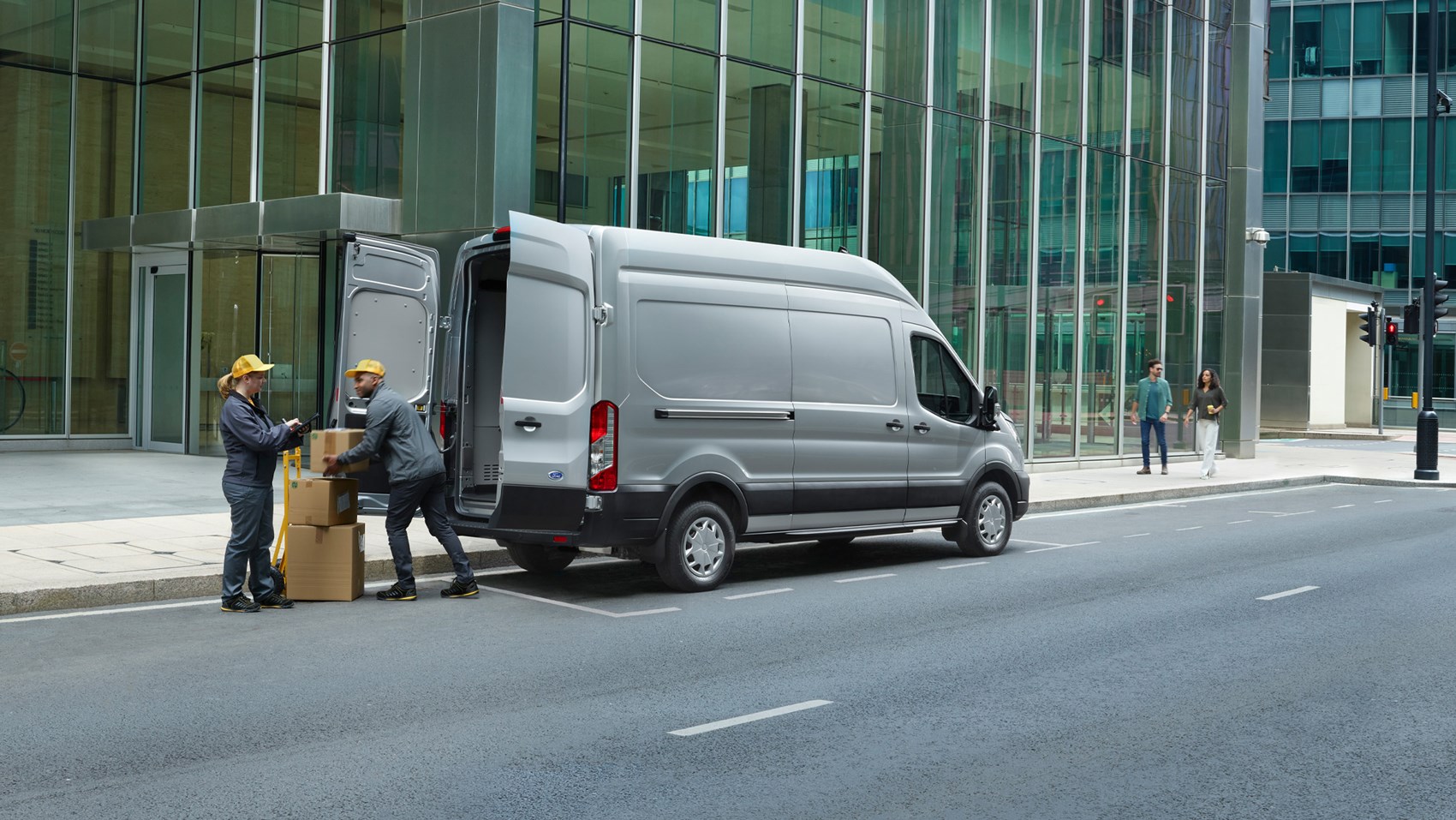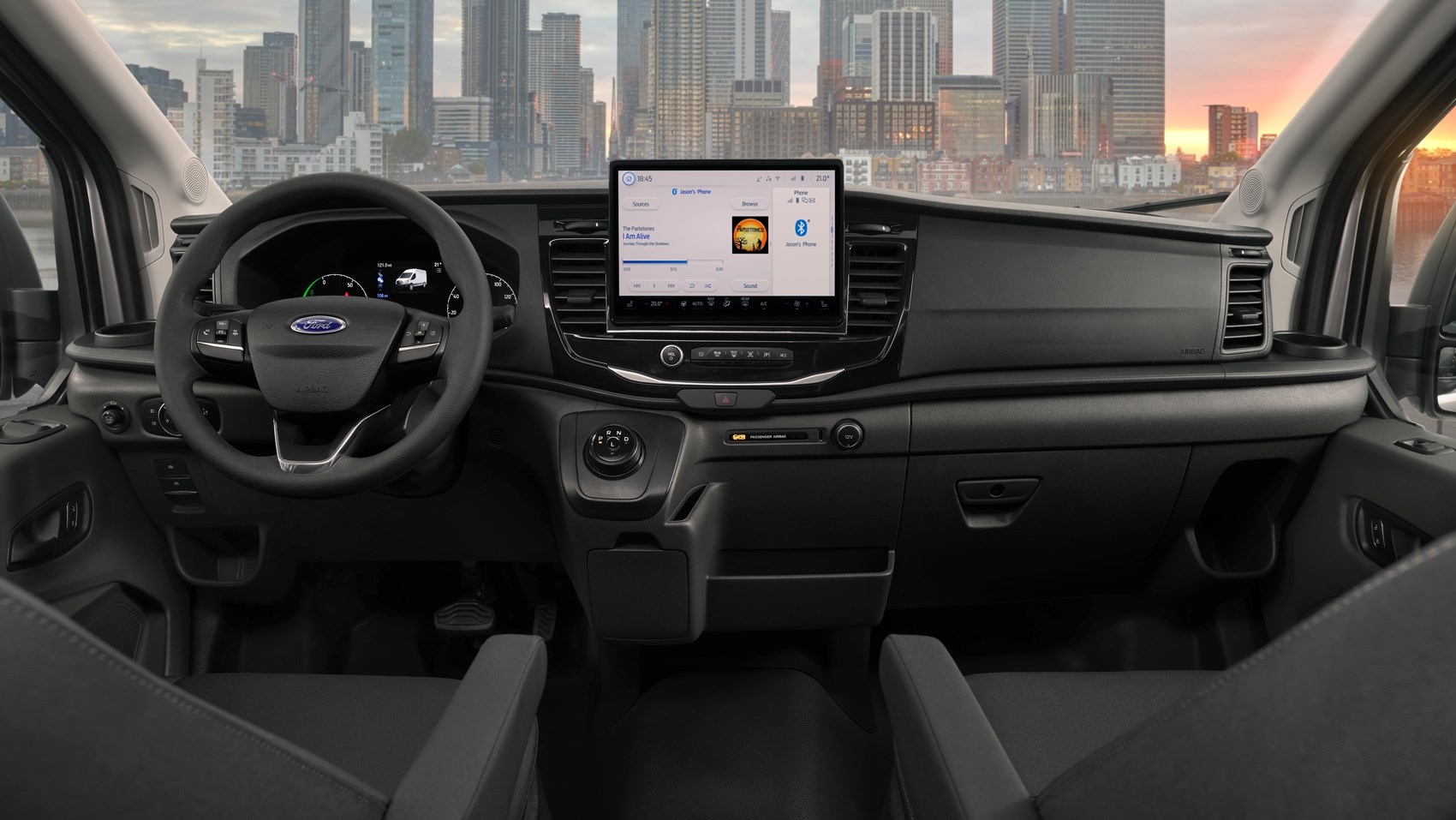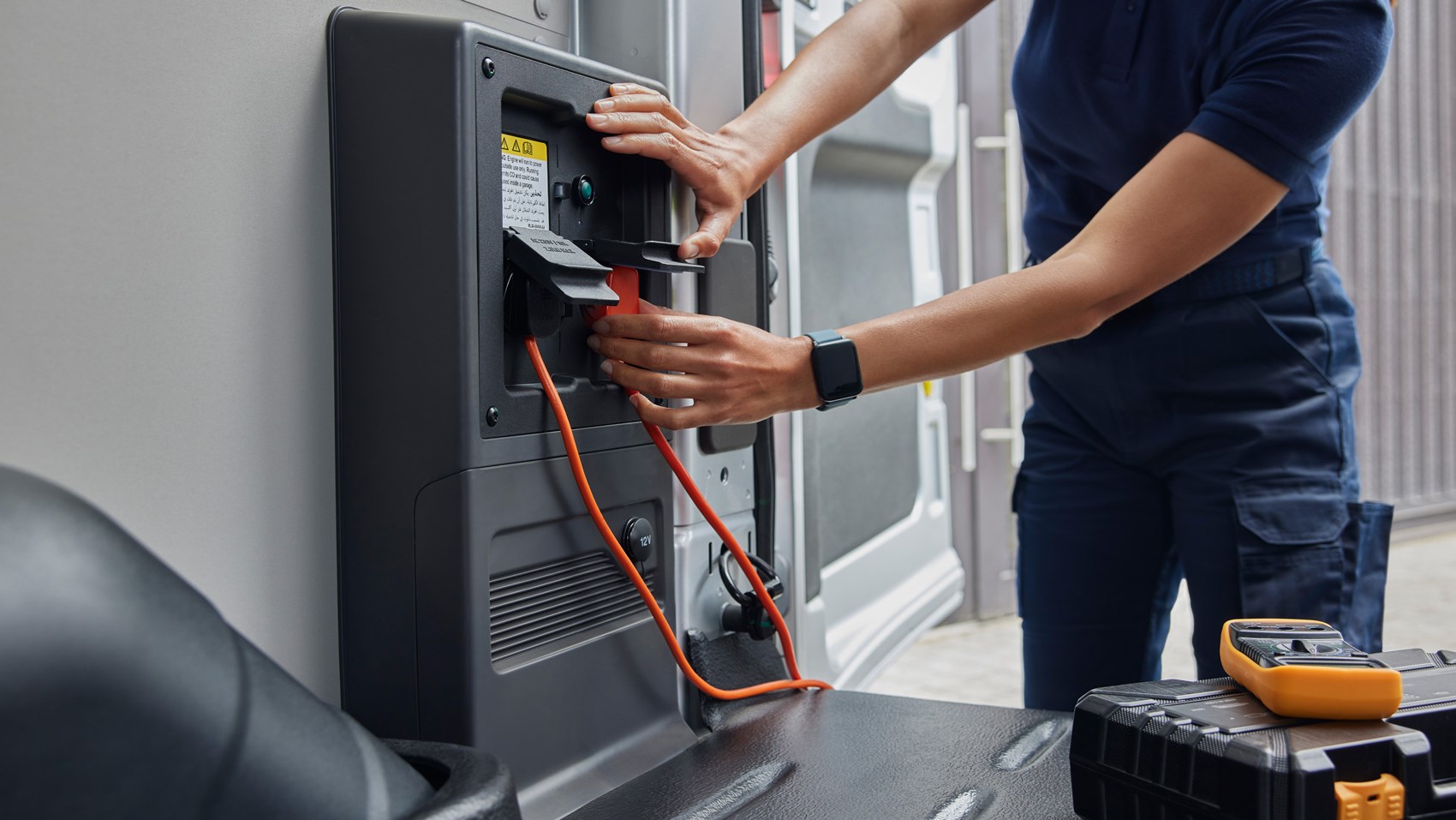► Electric Transit gets 196-mile range
► Up to 265bhp driving the rear wheels
► Backbone of Britain: upgraded
Forget all the exotica that you usually find cluttering up the pages of this website – the Ford E-Transit is very probably the most significant vehicle launch of 2022. A 100 per cent electric version of Ford’s large Transit van is no small moment.
Just consider how much stuff arrives at your house in the back of these things, how many miles the humble Transit trundles up and down the country, in and out of towns and cities, every day. Electrifying even a small percentage of them – the initial mix will be about five per cent (which is still one in every 20) – is an important next step in the evolution of our current transport system.
What’s more, the electric Transit isn’t operating at an equivalent level to the diesel models. In many respects it’s even better.
Why the big fuss? There have been large electric vans before, haven’t there?
Sure, there are a few on the market already. But most of these are poorly executed – as if some backyard garage has been tasked with the job of converting them from diesel in a kind of post-climate apocalypse version of Cuba – and the few that aren’t are hampered by tiny driving ranges and high prices.
So, while Ford is late to the party, it’s taken that time to come thoroughly prepared. A proper testing regime means the E-Transit has been put through all the same paces as any other model in the line-up, while a 68kWh battery pack gives the Ford a ‘targeted’ WLTP maximum combined range of 196 miles.

Available in 25 different versions, this will vary a bit, but that’s 100 miles more than the equivalent Mercedes-Benz eSprinter (which only comes in one version in the UK). For example.
And though the starting price of £45,550 (plus VAT) may seems astronomical for a van – even a large, highly specced large one – the competitions’ five figures typically start with the number six.
The old instant torque thing goes a long way, but it’s true – all the major rivals suffer from modest power outputs. Taking the Mercedes as the example again, the eSprinter has just 114bhp, which isn’t much if you need to load your large van up with building supplies.
Ford has approached this rather differently. Using one of the motor packs from the Mustang Mach-E, the lower-powered variant has 135kW, which is equivalent to 180bhp. This detuned model was added when the powers that be started getting nervous about the initial varaiant, which has 265bhp – massively more than any other van currently on sale in the UK, and pretty handy when maximum payload is as much as 1758kg.
Did we mention that the E-Transit is also rear-wheel drive?
Bloody hell. Sounds hilarious!
RWD in vans is more about loaded traction than sideways shenanigans – and as yet, Ford’s only let us have a go in the lower-powered model – but suffice to say you aren’t going to find many drivers complaining about the performance.
Better still, having made the decision to mount the motor at the rear, removing the need to muck about with prop shafts, Ford has had to completely re-develop the Transit’s rear suspension. So instead of leaf springs and a live axle, the E-Transit has coil springs and independent suspension, instantly elevating its handling to another level of impressive. And to be clear, the Transit was already kind of unexpectedly capable in this department.

Add the battery pack beneath the load floor, which lowers the unloaded centre of gravity by about a foot, and you’ve suddenly got a large van that not only exits roundabouts like a silent rocket but also does a good job of keeping itself flat and under control when scything about them. Beware taking on the hurrying courier in one of these.
The space under the bonnet isn’t empty – that’s where Ford has stashed all the control systems and added a crash structure the engineers call the ‘mega brace’, which replicates structural role of the combustion engine in a front-end smash – but the nose feels lighter and keener to turn.
Probably of more relevance to most drivers, however, is that the independent rear brings greater comfort over bumpy surfaces. The back remains a little bouncy when unloaded, but even the addition of a modest payload brings this quickly under control.
Better than the diesel?
Yes – although that is already one of the nicer large vans to drive, the E-Transit makes big strides beyond this. It’s quieter inside (not always a given with an electric van, weirdly), the single-speed transmission makes traffic a doddle, and there’s far less vibration as well, though we did detect some when the air-con kicked in hardest.
Ford has also developed a multistage brake energy regen system that’s different to anything we’ve experienced before. Unsurprisingly, there’s a choice of driving modes – Normal, Eco and Slippery – plus an L setting on the transmission that increases the motor drag when you lift off the accelerator. But if you’re paying attention to the road ahead and can see a little extra motor-braking might be helpful you can also tap the brake pedal.

One tap gives you a setting halfway between standard D and the more aggressive L, two taps takes you all the way to that Level – and this then resets once you start accelerating again. The concept works ok, if it also gives the vehicles behind the impression you might be having a fit, yet seems a weird approach when a set of paddles on the steering wheel could have achieved the same result in a more familiar fashion.
Also worth a note at this point is the onboard driving coach. This takes the form not only of a percentage display on the central screen but also speaks to you if it really thinks you need instruction – such as those moments when you’ve been repeatedly stabbing at the left pedal, trying to figure out the regen procedure…
Any other clever tech on-board?
That big central screen is loaded with Sync 4, and although the Leader and Trend spec levels are named the same as the diesel models, they both get more standard kit in the E-Transit. Upgrades include the ProPower Onboard system that uses the main drive battery as a source of power for tools and equipment; there’s a regular plug socket in the cab and two in the load area, and these can draw up to 2.3kW.

More critical here is the whole Ford Pro ecosystem Ford is introducing around this van. This packages up everything you need to get going with electric power, whether you’re buying one van or a fleet. This is one of those carmaker-as-service-provider things – Ford Pro offering fleet management, servicing, finance and charging infrastructure advice and installation, all at one point of contact.
This isn’t limited to the E-Transit – or indeed Ford vehicles, as it’s designed to integrate with existing mixed-manufacturer fleets – but it’s of particular relevance here in its claimed ability to help you understand what parts of the business an E-Transit would be appropriate for, and then take you through how you might manage the charging of it. Seems neat enough.
And how is the charging of it?
Getting to 100 per cent will take over eight hours on an 11.3kW three-phase supply – most UK households and are single-phase 7kW, which will take more like 11.5 hours, though this situation is improving.
The E-Transit also has 115kW DC charging capability, giving you 80 per cent in about 34 minutes. But this is more expensive (mostly requiring the public charging network) and repeated use won’t be good for long-term battery health.
Ford E-Transit: verdict
The shorter driving range and having to figure out the charging seems like a small price to pay for all the positive stuff above. If you can make the E-Transit work for you it’s worth some serious consideration – which is not the kind of noise we’d make about any other large electric van, where you’ll pay more money for a much lower-grade experience in every respect.
As such, the biggest problem with the E-Transit is likely to be getting one, as we sincerely doubt supply will be able to keep up with demand.